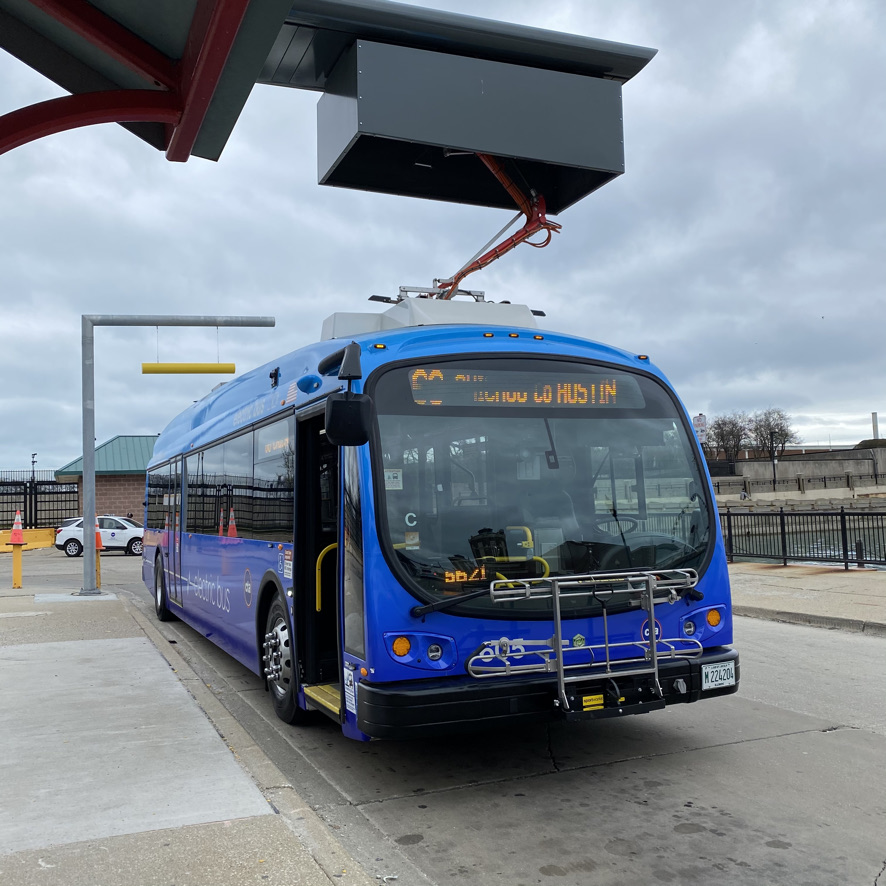On April 2, the CTA announced that it is testing six electric buses on the #66 Chicago Avenue route. If they prove successful, the agency will authorize the production of another 17 electric buses. In addition to the e-buses producing fewer emissions, the CTA said the new vehicles will save the agency money on fuel and maintenance, while providing a smoother, quieter ride to passengers. Streetsblog Chicago wanted to see if the buses live up to the hype in terms of rider experience.
Riding an e-bus during the morning rush last Thursday was indeed a quiet, smooth ride. In addition, the bus was very clean, as you'd expect from a brand-new vehicle. The horizontal portion of the seats are longer than on a typical CTA bus, which might make a relatively short customer feel shorter. The seats in the back of the vehicle resemble a living room set-up, with four chairs facing the rear of the bus, two seats facing inwards, and the back bench facing forward, creating a large square space, presumably to accommodate more standing passengers.
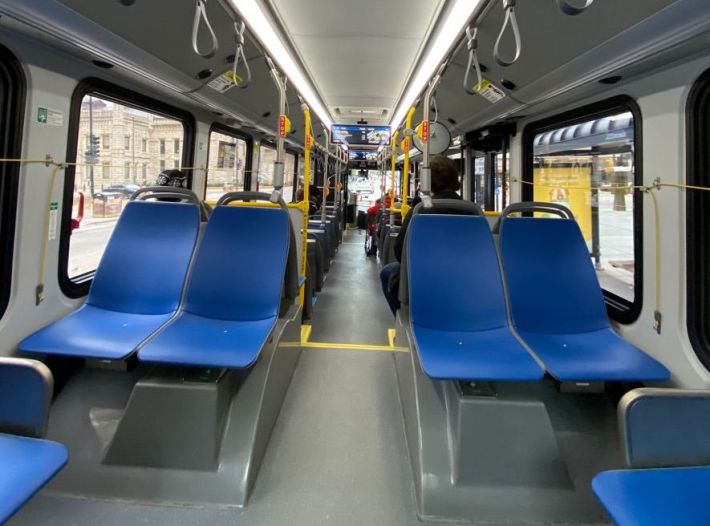
There were two large screens inside the bus that shared real time arrivals at upcoming stops. The bus was lined with LED lights that provided bright, but not unpleasant, illumination. The hydraulic "kneeling" feature at the front of the bus, which lowers the first step for people with mobility challenges, was much quieter than on a conventional bus, and the wheelchair ramp retracted more quickly after use. The overhead ventilation system was relatively quiet and the dozens of small, circular vents are thankfully adjustable since the air flow is strong. The rear doors open rather quietly with smooth sounding hydraulics. The CTA describes the noise level inside of the e-bus as being the same volume as a conversation, and that proved to be true.
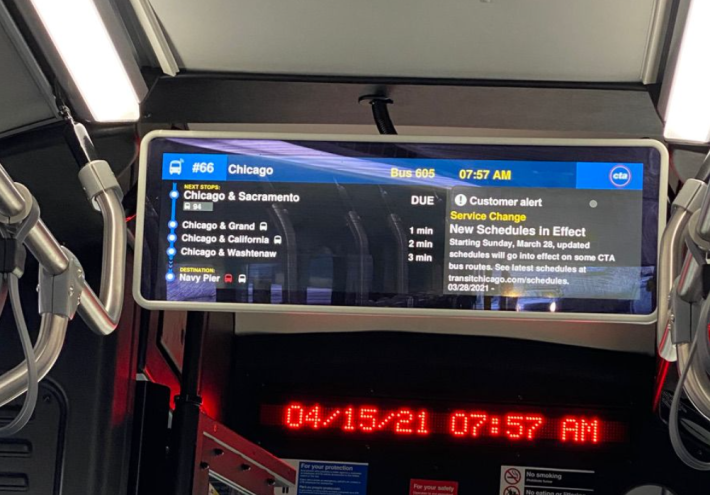
Josh Barrett, a frequent #66 rider, told me he likes that the interiors of the e-buses are composed of more plastic than the older buses, which he said gives the vehicles a cleaner appearance. He said the e-buses accelerate and decelerates at a more even keel than the gas-powered vehicles, which means less jarring for passengers. Barrett was so enthusiastic about the e-buses that he said he'd be willing to let a conventional bus pass by him at a stop and wait for one of the new buses, and he wouldn't even mind if the CTA raised its fares by a quarter to pay for electrifying the whole fleet.
Another riders commented that the e-buses are “better than the other bus. These have nice seats.”
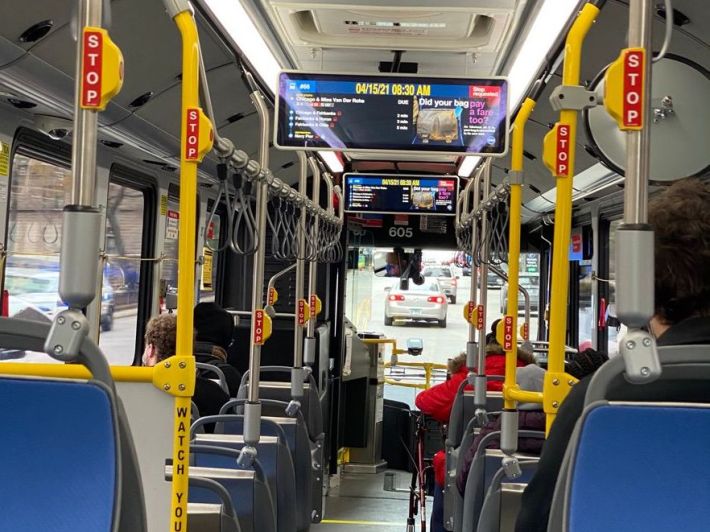
A woman named Tessa said that although she has ridden CTA buses for years, she was new to riding the #66. She too said she enjoyed the smoother ride and would be willing to pay a higher fare to pay for converting all CTA buses to electric. She added that she appreciates that electric buses are better for air quality in the city.
Interestingly, the bus operator wasn't completely sold on the new vehicles. He said he could feel even the smallest pothole or bump in the road, although that didn’t change his driving technique. He indicated that a bigger problem is that his knees hurt after driving an e-bus, because the seat doesn’t move far away enough from the pedals. He also finds the narrower seats to be uncomfortable.
One more takeaway from my rush-hour ride on the #66 e-bus was that the pop-up bus lanes the city installed on Chicago Avenue between Larrabee and Ashland avenues seemed to be having mixed results. From Ashland to California avenues, motorists were reasonably respectful of the lanes, but west of California, I saw multiple motorists driving or standing in them.
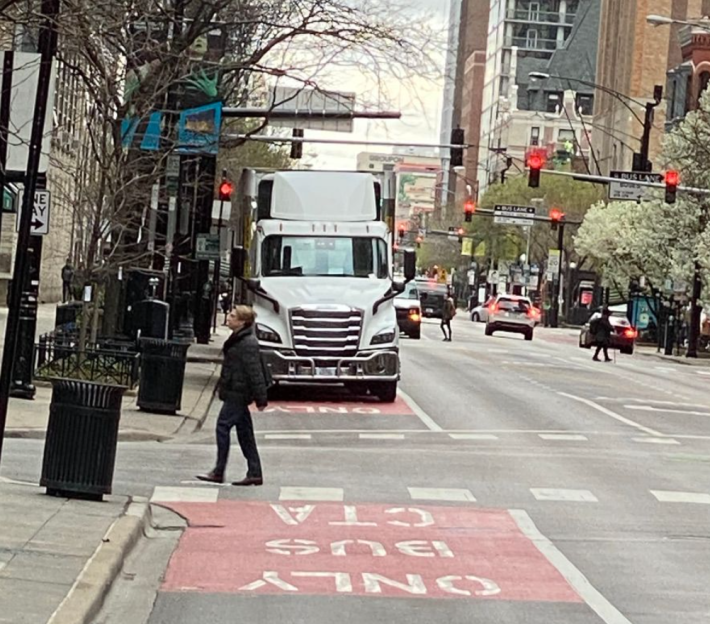
The CTA plan is to achieve full bus electrification by 2040. Active Transportation Alliance spokesperson Kyle Whitehead says that more people riding the bus instead of driving or taking ride-hail is one of the best routes to cleaner air in our communities – especially if those buses are electric. He noted that Chicago's recently passed capital spending plan and the likely passage of a $2 trillion federal infrastructure package, which would more than double funding for public transportation, and include $174 billion for vehicle electrification, should bring a major infusion of capital funds for Chicago transit.
Whitehead added that a chunk of the new funding should be earmarked for electrifying the CTA bus fleet as soon as possible. He argued that electrification is a racial equity and environmental justice issue, since research shows Black and Brown neighborhoods have higher rates of asthma and COPD due to poor air quality.
